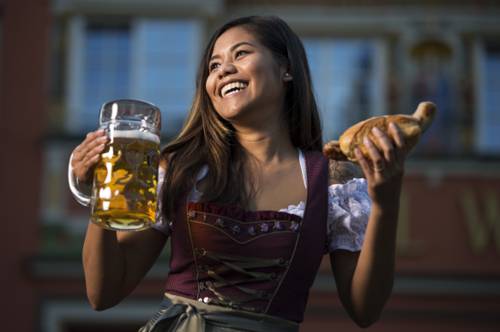
FAQ About The Role of Culinary Storytelling in Cultural Identity

What is culinary storytelling?
Culinary storytelling is the art of using food and cooking practices to convey narratives, traditions, and cultural identities. It involves sharing recipes, cooking techniques, and the histories behind dishes to connect with audiences and pass these stories through generations. This practice underscores the significance of food beyond sustenance, emphasizing its role as a vessel for history, memory, and cultural expression.

How does culinary storytelling preserve cultural identity?
Culinary storytelling preserves cultural identity by maintaining and celebrating traditional dishes and culinary practices. Food becomes an edible form of heritage that can be experienced and shared across generations, keeping the stories and origins alive in a tangible form. As these recipes and cooking methods are passed down, they reinforce cultural values and histories, allowing communities to retain their distinct identities while adapting to modern influences.

Why is food important in cultural storytelling?
Food is important in cultural storytelling because it serves as a universal language that communicates cultural values, traditions, and history. It provides a sensory experience that invokes memory and emotion, allowing individuals to connect with their heritage and share their culture with others. Food's role in celebrations, rituals, and daily life embeds it deeply in cultural narratives, making it an effective medium for storytelling.

Can culinary storytelling help in cross-cultural understanding?
Yes, culinary storytelling can significantly contribute to cross-cultural understanding. By sharing the stories and traditions behind dishes from different cultures, people can foster appreciation and respect for diverse ways of life. This exchange encourages dialogue and empathy, helping individuals see beyond stereotypes or misconceptions and appreciate the richness of cultural diversity through the unifying experience of food.

What are some examples of culinary storytelling in practice?
Examples of culinary storytelling include family recipes handed down through generations, traditional cooking classes that offer cultural context, and food festivals that showcase regional cuisines. Another example is the use of storytelling in restaurants where chefs narrate the origin and significance of dishes on the menu. These practices help keep cultural narratives alive and accessible to broader audiences.

How do culinary traditions shape community identities?
Culinary traditions shape community identities by serving as a marker of cultural heritage that unites people. Shared food practices, recipes, and rituals create a sense of belonging and identity within communities. They reinforce communal bonds and foster pride in cultural heritage, helping communities uphold their unique identity amidst global influences.

What role do family recipes play in culinary storytelling?
Family recipes play a crucial role in culinary storytelling as they act as personal and cultural heirlooms. These recipes often carry historical significance, embodying family traditions and memories. By passing down these recipes, families preserve their cultural narratives and imbue future generations with a sense of identity and continuity, keeping their heritage alive through culinary practices.

Are there any modern adaptations of culinary storytelling?
Modern adaptations of culinary storytelling include food blogs, vlogs, and social media platforms that narrate cultural stories associated with various cuisines. Chefs are also using innovative techniques to reinterpret traditional dishes while preserving their essence, sharing these stories in contemporary settings like fusion restaurants. These adaptations leverage technology to reach wider audiences and keep traditional narratives relevant in today's fast-paced world.

How do food festivals contribute to culinary storytelling?
Food festivals contribute to culinary storytelling by showcasing a variety of traditional and contemporary dishes, often accompanied by the cultural stories behind them. These events bring communities together, celebrating their culinary heritage and allowing participants to learn about different cultures through food. By highlighting the diversity and history of cuisines, food festivals play an important role in preserving and sharing culinary traditions on a larger scale.

What is the relationship between culinary storytelling and cultural heritage?
Culinary storytelling is intrinsically linked to cultural heritage as it captures and communicates the historical and cultural contexts of a community's food practices. It provides insight into how cuisines have evolved over time, reflecting social, economic, and historical influences. By engaging in culinary storytelling, individuals and communities preserve and celebrate their cultural heritage, ensuring these traditions continue to inform and enrich their identities.

How does globalization affect culinary storytelling?
Globalization affects culinary storytelling by both challenging and enriching traditional narratives. On one hand, the widespread exchange of ideas and cultures can dilute traditional culinary practices. On the other hand, it also provides opportunities to share and reinterpret culinary stories globally, bringing greater visibility to diverse cultures. Globalization encourages the fusion of cuisines and the evolution of culinary storytelling by blending different cultural influences.

Can culinary storytelling be used in education?
Yes, culinary storytelling can be effectively used in education to teach cultural history, social studies, and even language skills. By studying the origins of recipes and the cultural significance of food practices, students gain insights into historical contexts and cultural diversity. Cooking classes that incorporate storytelling elements can enhance understanding and appreciation of different cultures, making education more engaging and holistic.

What is the significance of food in rituals and celebrations?
Food is significant in rituals and celebrations as it symbolizes cultural heritage and fosters community spirit. In many cultures, specific dishes are prepared and shared during festivals, weddings, or religious ceremonies, embodying the cultural and spiritual values of the community. Such culinary practices hold symbolic meanings and are essential in marking important life events and seasonal transitions, reinforcing cultural identity and continuity.

How does culinary storytelling differ from other forms of storytelling?
Culinary storytelling differs from other forms of storytelling by using food as its main medium. While traditional storytelling might use words or visuals, culinary storytelling engages all the senses through taste, aroma, and visual presentation. It provides an immersive experience that connects people to their cultural roots in a visceral way, making it unique and powerful in conveying cultural narratives and histories.

In what ways can culinary storytelling build community relationships?
Culinary storytelling can build community relationships by bringing people together over shared meals and cooking experiences. When individuals come together to prepare or enjoy traditional foods, it fosters a sense of camaraderie and understanding. Sharing culinary stories during these interactions strengthens communal bonds and encourages intergenerational learning and appreciation of cultural diversity.

How are chefs important to culinary storytelling?
Chefs play a pivotal role in culinary storytelling by curating dishes that represent cultural narratives. Through their creativity and expertise, they preserve, reinterpret, and present traditional cuisines to contemporary audiences. Chefs often tell the stories behind the ingredients, techniques, and historical contexts of their dishes, bringing cultural stories to life and making them accessible and relevant to new generations.

What is the role of food in maintaining cultural identity during migration?
During migration, food plays a crucial role in maintaining cultural identity by providing a sense of familiarity and continuity. Immigrants often carry their culinary traditions with them, using food as a connection to their homeland and a way to introduce their culture to new communities. Food becomes an important marker of identity in diaspora communities, helping individuals preserve and adapt their cultural heritage in foreign environments.

Are there any challenges to culinary storytelling today?
Challenges to culinary storytelling today include the risk of cultural appropriation, where elements of a culture are used without respect for their original meaning or context. The commercialization of traditional dishes can also lead to a loss of authenticity. Additionally, globalization and urbanization may lead to the homogenization of culinary practices, diluting distinct cultural narratives. However, these challenges can be countered through efforts to educate and promote respect for cultural diversity.

How does culinary storytelling influence tourism?
Culinary storytelling influences tourism by attracting visitors interested in experiencing authentic local cuisines and cultural narratives. Food tours, cooking classes, and culinary festivals offer immersive experiences that highlight a region's cultural heritage. This form of storytelling enriches travelers' experiences and contributes to sustainable tourism by supporting local communities and preserving culinary traditions.
